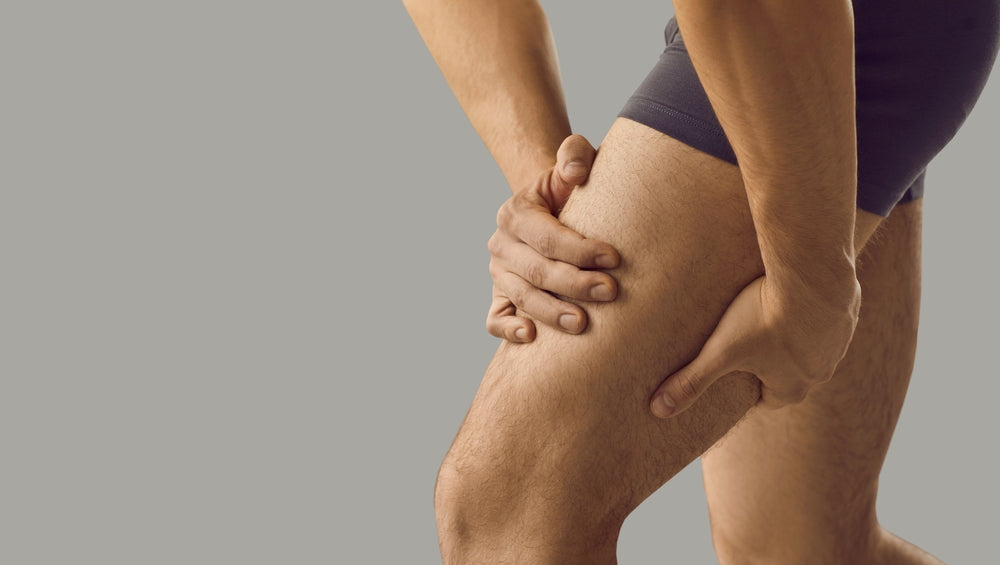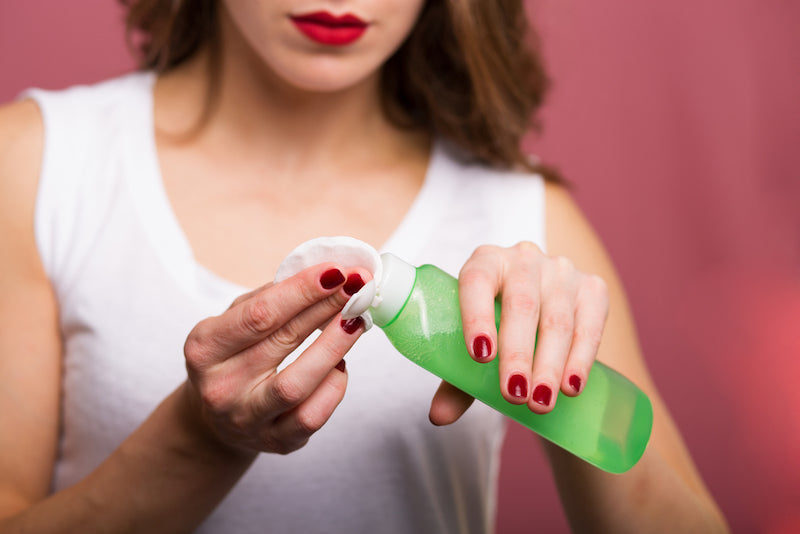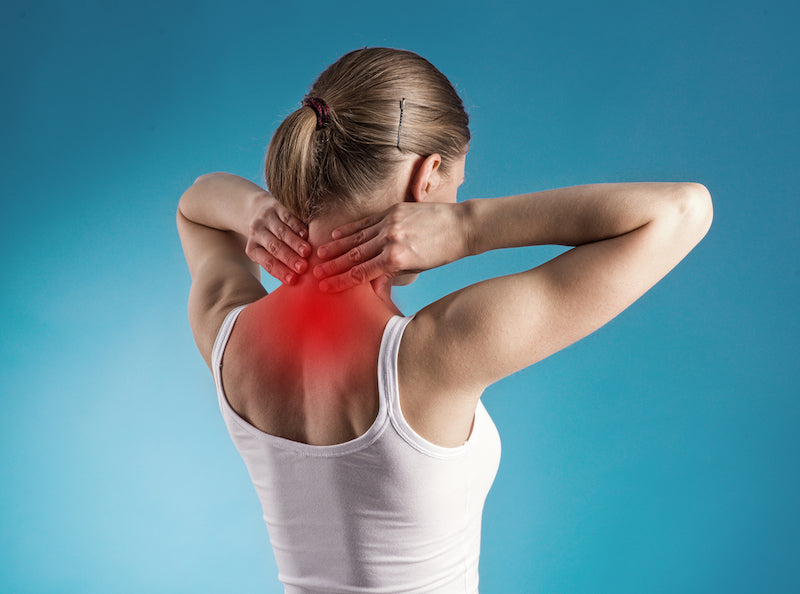
Relieving Sore Hamstrings Post-Run: CBD & Other Proven Methods
Running can boost cardiovascular health, mood, and even the quality of sleep. But, as is true for everything in life, jogging and other forms of working out are not without its downsides, mainly the toll it can take on the body.
One issue that many runners face is tightness or pain in their hamstrings. Post-workout soreness of a hamstring can occur due to strains, tears, and just normal muscle tenderness from connective tissue damage during exercise. While it is natural to feel slightly tight or stiff after training, taking measures to loosen them up post-run can lessen the likelihood of more serious injuries.
So what happens to your body while working out that leads to sore hamstrings? A common culprit is muscle overload when your calf muscle is stretched beyond its capacity or muscle tightness when you skip stretching before or after workouts. Another factor can be poor conditioning, meaning that your muscles are weak, causing an increased likelihood of injury. And we can’t ignore muscle fatigue as a common cause of hamstring injuries.
The good news is that you don't have to let sore hamstring muscles stand between you and your exercise routine. It is natural to have post-run hamstring soreness but rest assured; there are many easy options for how to treat a sore hamstring after working out quickly and effectively.
Methods for Relieving Sore Hamstring Pain
Proper stretching
Proper hamstring stretches before and after a run or working out cannot be overemphasized. Hamstring stretches help keep the muscles mobile and flexible and should never cause pain. When stretching your hamstrings, make sure not to push yourself beyond your boundaries to the point of pain. Your flexibility should improve over time, so start with stretches that cause mild tension in your hamstrings and work your way up to moderate tension.
Here are a few carefully executed stretches to incorporate into your routine to relieve hamstring pain.
Seated hamstring stretch – Sit on the ground while bringing the soles of your feet together into a butterfly position. Extend one leg, keeping your knee bent. Bend at your waist, reaching your arm toward your ankle or foot. Hold for about 30 seconds and repeat on the other side.
Reclined hamstring stretch – Lie on your back with one leg extended. Elevate your other leg by lightly holding the back of your knee and guiding it toward your chest until you feel a stretch. Hold this stretch for 20-30 seconds.
Standing hamstring stretch – While standing, extend one leg in front of you, rest your heel on the ground, and point your toes up toward the sky. Bend at your waist, leaning toward your toes while keeping a neutral spine and holding for 30 seconds.
CBD-enriched hamstring massages
Massaging sore hamstrings can stimulate blood flow and loosen tight muscles, relieving some of the tension. Adding CBD pain products to the mix reduces inflammation, muscle soreness, and stress.
CBD, or cannabidiol, is a plant-based chemical found in the hemp plant, which, when absorbed into your body, can produce numerous health benefits. For further context, your body contains an endocannabinoid system (ECS), which communicates between your cells and helps you keep your body in balance. The ECS involves bodily functions such as inflammation, pain, and stress reduction.
When CBD is combined with massage, your sore hamstrings benefit from the increased circulation caused by the repetitive rubbing. Furthermore, when you apply full-spectrum CBD directly to painful areas, they can work together to reduce muscle spasms and pain. An even more potent option includes a product that combines CBD with natural ingredients such as lidocaine, arnica, and menthol.
If you are looking for how to treat sore hamstrings, this combo of CBD and massage is your best bet.

Foam Roller Usage
Using a foam roller is an excellent choice if you're seeking a simple method to alleviate soreness in your hamstrings post-workout. It not only diminishes soreness but also enhances flexibility with regular use, as verified through this scientific study.
While sitting on the floor, place the roller under both of your hamstrings. Prop yourself into an upright position and use your hands for support behind you. Glide your hamstrings along the surface of the foam roller in a forward and backward motion, massaging the area for about 30 seconds at a time.
While foam rollers come in numerous densities and textures, there is no universally ideal type for alleviating sore hamstrings post-workout. What some may consider "just right" may be uncomfortable for others, especially if they haven't nailed proper techniques. For such reason, beginners may want to start with using softer, smooth foam rollers on sore hamstrings. Though less impactful and less likely to last long-term, this design is less costly and less likely to inadvertently cause soreness and bruising. Once you're fully committed to using foam rollers, upgrade to a denser, textured model that will provide a "harder" massage to your sore hamstrings pre- and post-workout.
Cold compression
During the first 24 to 72 hours after hamstring soreness or injuries, cold compression can help reduce inflammation, swelling, and discomfort. Wrapping your hamstring with a compression sleeve or bandage may help alleviate muscle soreness.
Keep an ice pack on your hamstrings for 15 minutes every 2 to 3 hours to help reduce swelling. However, for the ultimate relief, try using a cryo massage roller. After freezing the stainless-steel ball for 2 hours to activate cold relief, the cryo massage tool can be used to reduce inflammation and lactic acid buildup.
Rest
A basic solution for relieving pain from sore hamstrings is often overlooked – rest. Avoiding any activity that causes inflammation, swelling, or discomfort can give muscles time to repair tissue.
Getting enough sleep is essential for whole-body muscle recovery, including your hamstrings. Sleep deprivation may impair muscle recovery by not allowing the body to activate its inflammation and immune response. If your hamstrings are continually soar, try adding a little more rest to your daily routine.
A helpful way to remember the healing recipe for most muscles is RICE. RICE stands for rest, ice, compression, and elevation. A key element to the RICE healing protocol is to rest and allow the body to heal itself given time and a few natural supports.
Hydration and Eating Strategically Post-Workout
When you exercise, the proteins that make up your muscle fibers become broken down or damaged, thus causing soreness. Your muscles also use up glycogen, one of the body's fuel sources, meaning you need to rebuild these glycogen stores and restore muscle protein.
Research has found that 20 to 40 grams of protein, such as chicken, fish, and lean meat, can maximize muscle growth. By rebuilding protein, your soar hamstrings can also be assisted.
Rebuilding depleted glycogen can also help alleviate post-run sore hamstrings. Adding carbohydrates like potatoes, rice, bananas, apples, or whole wheat grains to your diet can enhance muscle recovery.
In addition to your post-workout food choices, staying hydrated before and after exercise can help avoid hamstring cramps, soreness, and strains. Dehydration impairs your muscles' ability to repair themselves.
Many experts agree that drinking half of one's body weight in ounces can relieve the symptoms of dehydration, leading to more energy and less muscle soreness. Hydrating with drinks containing electrolytes can also replenish essential minerals lost during exercise.
NSAIDs
There is a time when you might need to treat sore hamstrings with over-the-counter pain medication. NSAIDs or non-steroidal anti-inflammatory drugs, such as Advil or Aleve, can be used to relieve pain and reduce inflammation.
Keep in mind that taking NSAIDs may also come with side effects. While natural options have a low likelihood of adverse effects, NSAIDs may cause indigestion, nausea, headaches, or drowsiness.
Speak with your doctor before using this type of medication if you have heart disease, kidney disease, high blood pressure, or stomach ulcers. For more insights into how these types of medications compare to natural alternatives, read CBD & Ibuprofen - Anti-inflammatory Comaprison & FAQ.
Consider Diversifying Your Workout Routine
Sore hamstrings can often signal general overuse, a common occurrence among runners. If you frequently experience strained hamstrings, consider diversifying your workouts to target various muscle groups. This not only provides your legs with much-needed rest but also enhances overall fitness. While there is no wrong type of workout, some that are particularly helpful to runners with regular hamstring soreness are yoga and pilates, as both focus on improving full-body strength and flexibilty.
Regularly Suffer From Sore Hamstrings? Consider How Your Run
Your form as a runner has a direct impact on your likelihood of developing sore hamstrings and other injuries. While this can relate to your posture and how your body moves, your stride rate (also known as "cadence") itself can play a positive or negative role. As explained by ASICS Runkeeper, "Runners with a high cadence will have a smooth gait, while runners with a low cadence seem to bounce up and down more. Most notably, runners with a low cadence are more likely to overstride and thus have a higher risk of injury . . . The exercise physiologist Jack Daniels determined from statistical data at the 1984 Olympics that the ideal cadence for runners is 180 steps per minute." The takeaway? Higher stride rates reduces the impact and shock felt by your feet and legs.
Another common running mistake that can lead to sore hamstrings? Failure to "activate your glutes," more commonly known as "butt muscles." For a full explanation, click here!
Treat Yourself to Natural Wellness Solutions With Botanika Life
Pain like sore hamstrings doesn’t have to hold you back from pursuing your workout passions, whether that be running, golfing, cycling, or traveling the world. Our assortment of pain products come in various consistencies, from handy pain rollers to muscle balms, but all deliver a powerful, plant-based recipes crafted to deliver both shor-term relief and long-term anti-inflammatory benefits. Leverage the power of nature to relieve sore hamstrings!

How do you know if you experienced a mild sorestring muscle strain or a more serious injury?
Sore hamstrings post-run or workout suck, no matter what. But the severity of the strain will directly determine how long you need to rest.
Mild hamstring muscle strains typically cause moderate discomfort, minimal swelling, and little to no bruising. You should still be able to walk normally and will experience improvements within the next few days.
In contrast, more serious hamstring msucle injuries present with severe pain, significant swelling, noticeable bruising, and major movement restriction, often persisting beyond a week without improvement. If you experience sudden, severe pain, an inability to bear weight, or a visible deformity, seek medical attention.

By Emily Wegener
With a unique background as an Integrative Nutrition Health Coach, Masters Degree in Teaching and experience in Psychology, Emily spends much of her time researching and trying out new holistic healing modalities.


